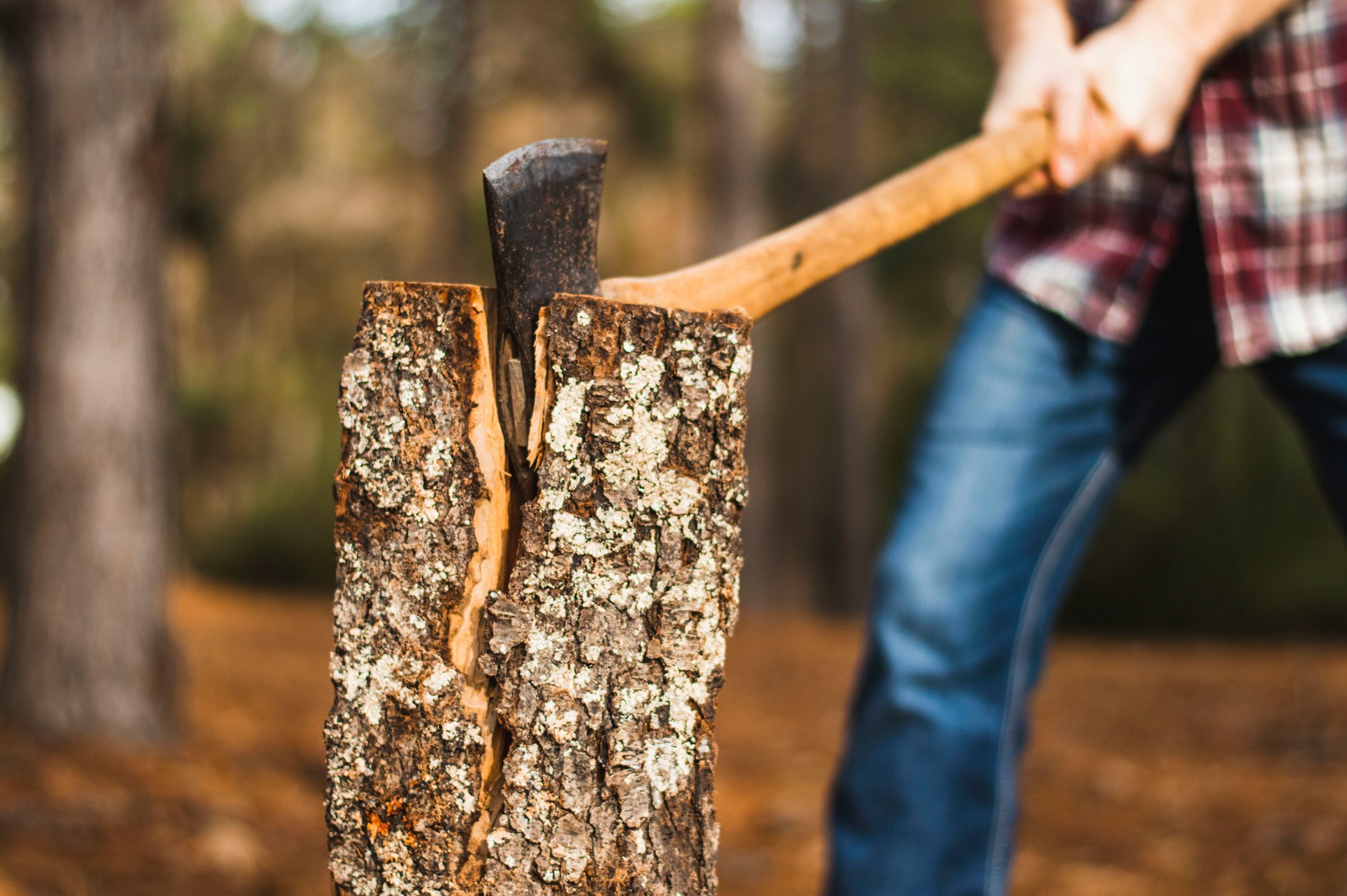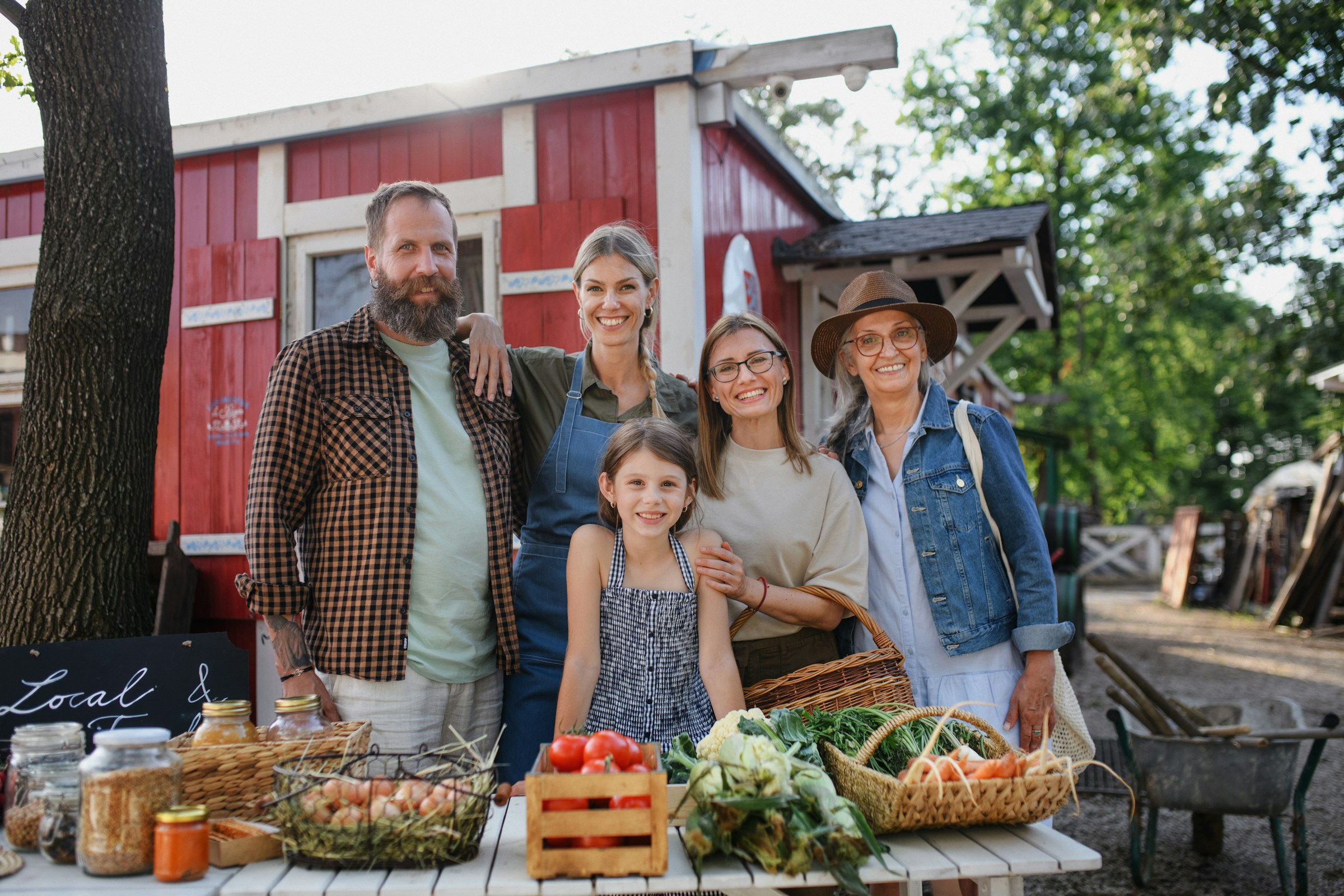Preparedness
25 Essential Hacks for Easier, More Efficient Homesteading

Living a self-sufficient life on a homestead is a dream for many, but it comes with its own set of challenges. Thankfully, there are numerous hacks that can help make homesteading easier, more efficient, and more cost-effective. Below is a list of practical tips and tricks designed to save you time, money, and effort while maintaining your homestead.
1. Waste Not, Want Not
Adopt a mindset of reusing and recycling everything possible. Beyond composting food scraps, keep any wood and plastic materials. These can be repurposed into essential homestead items like pallet gardens, chicken coops, and animal feeders.
2. Smart Animal Housing
Carefully consider how you house animals. Some pairings work better than others. Cows generally get along with all livestock, but pigs can be tricky to pair due to their omnivorous nature.
3. Vertical Gardening
If space is limited, try vertical gardening. Build a simple vertical frame or use higher stakes to grow dirt-free produce, maximizing your available space.
4. DIY Composting
Instead of purchasing compost, make your own. Whether you choose a traditional compost pile or vermicomposting with worms, this practice enriches your soil and reduces waste.
5. Extend the Growing Season
To extend your growing season, use homemade cloches, row covers, or a greenhouse. You can also warm the soil with black tarps for early spring planting.
6. Label Removal from Jars
Reuse jars for canning by removing sticky labels with water and a safe oil like grapeseed to get rid of the adhesive.
7. Quick Bread Proofing
Create a homemade “proof box” by placing a bowl of steaming water in the oven with your dough. This creates a warm, humid environment for faster rising.
8. Multipurpose Mason Jars
Use mason jars as measuring cups. For example, fill a half-gallon mason jar three-fourths full to measure six cups of water.
9. Easy Egg Peeling
Steam, don’t boil, your eggs for easier peeling. Place eggs in a metal colander over boiling water, cover, and steam for about 20 minutes.
10. Dollar Store Savings
Save money by purchasing essentials like sewing needles, plastic buckets, and clothespins at your local Dollar Store.
11. Protect Fruit Trees
Keep squirrels and birds away from fruit trees by hanging old CDs or DVDs from branches. The reflected light deters these pests.
12. Insect Control in Water
Add vegetable oil to standing water in bird feeders or barrels. The oil creates a film that prevents insects from breeding.
13. DIY Garden Markers
Make garden markers by placing seed packets inside upside-down mason jars. This protects the packets and marks your plants.
14. Utilize Poultry Manure
Use chicken or duck manure as fertilizer by creating a temporary pen in your garden area, allowing them to enrich the soil naturally.
15. Homemade Mulch
Save money by making your own mulch from shredded newspaper, animal manure, or cardboard to prevent weeds in your garden.
16. Snail and Slug Trap
Control snails and slugs by placing a small dish of beer near affected areas. They will be attracted to the beer and unable to escape.
17. Preserve Fresh Herbs
Keep herbs fresh by chopping them and freezing in ice cube trays with olive oil. This method preserves flavor and freshness.
18. Rust Prevention for Tools
Protect tools from rust by storing them in a bucket filled with sand and mineral oil, reducing the need for constant cleaning.
19. Companion Planting
Enhance your garden’s growth and pest resistance by practicing companion planting. For instance, plant tomatoes with marigolds for mutual benefits.
20. Cinnamon as a Pest Repellent
Use cinnamon to repel pests, prevent mold on cuttings, and protect livestock from illnesses by adding it to their water.
21. DIY Animal Feeders
Create your own animal feeders using plastic containers and PVC elbow joints. Drill holes to attach the joints, and you’re set.
22. Source Free Sawdust
Network with woodworkers or foresters to obtain free sawdust, which can be bartered for with produce or eggs.
23. Homemade Cloches
Fashion cloches from empty soda bottles by cutting them and placing them over plants at night, removing them in the morning.
24. Squash Bug Egg Removal
Remove squash bug eggs by pressing packing tape onto the leaves and peeling it off, effectively removing the eggs.
25. Freezing Extra Eggs
Don’t waste extra eggs. Crack them into a muffin pan, freeze, and store in containers for later use.
These homestead hacks offer practical solutions for everyday challenges, helping you to live a more self-sufficient and efficient lifestyle. By incorporating these tips, you can save time, money, and resources while enjoying the rewards of homesteading.
Let us know what you think, please share your thoughts in the comments below.

Preparedness
Unlock Homesteading Secrets for Tiny Spaces and Ultimate Self-Reliance

If you’ve ever thought that homesteading is out of reach due to limited space, it’s time to rethink that notion. With a bit of ingenuity, you can adopt the homesteading lifestyle even in the smallest of areas. Whether you’re working with a modest backyard, a balcony, or just a windowsill, transforming your space into a hub of sustainable living is entirely feasible.
One crucial strategy for small-space gardening is to “think vertically.” Vertical gardening maximizes available space by making use of walls, fences, and trellises. Consider investing in or crafting your own hanging or vertical planters from repurposed materials. This approach enables you to cultivate a diverse array of herbs, vegetables, and even fruits within your limited area.
For those with a balcony, porch, or windowsill, container gardening offers a versatile solution. Select pots of varying sizes and materials, ensuring they have adequate drainage. A lightweight potting mix is ideal, and self-watering containers can add convenience to your gardening efforts.
Starting your homestead with herbs is both easy and rewarding. Herbs like basil, mint, rosemary, thyme, and parsley are compact and thrive in small spaces. “Snip some fresh herbs whenever you need them, and savor the taste of homegrown goodness.”
Collecting rainwater doesn’t require a vast expanse. Install rain barrels or small water tanks to gather rainwater from your roof or balcony. This practice not only nourishes your plants but also diminishes your dependence on municipal water supplies.
Composting is a fundamental practice for any homesteader, regardless of space limitations. Kitchen scraps, yard waste, and even some paper products can be composted. Explore methods such as worm composting or bokashi composting, which are well-suited for small spaces. This not only reduces waste but also generates nutrient-rich soil for your plants.
Repurposing and upcycling are at the heart of the homesteading spirit, and space constraints are no barrier. Transform old pallets into raised beds, start seeds in mason jars, or turn old furniture into planters. The possibilities are endless, allowing you to save money while adding a personal touch to your homestead.
Self-sufficiency is a core aspect of homesteading, and it isn’t limited by the size of your space. Learning essential survival skills, like building a fire or purifying water, is invaluable. Engage in survival classes, join local garden clubs, and connect with local farmers. “The key is to get started and prepare now for unforeseen disasters.”
Let us know what you think, please share your thoughts in the comments below.
Preparedness
Master Wildfire Defense with These Essential Home Protection Tips

Understanding the unpredictable nature of wildfires is crucial for homeowners looking to protect their properties. The primary culprits for home ignitions during these events are embers and small flames. Embers, which are burning fragments of wood or vegetation, can be carried by the wind for over a mile, igniting homes and other structures in their path.
To effectively shield your home from the threat of wildfires, it’s essential to focus on two main factors: the quality of the defensible space around your home and the structural ignitability of the building itself. These elements together form what is known as the Home Ignition Zone (HIZ), which encompasses both the structure and the immediate surroundings.
The goal is to minimize or eliminate fuels and ignition sources within this zone. Defensible space is a crucial element in this strategy, involving the modification of the area around a home to reduce fire hazards. By treating or removing natural and manmade fuels, you can slow the spread of a wildfire and reduce the risk of it reaching your home.
Creating an effective defensible space requires dividing your property into management zones, each with specific treatment techniques. This approach should be applied to all structures on your property, including garages and storage buildings. The design of these zones will depend on factors such as the types and sizes of vegetation on your property.
The first zone to address is the area from the home to five feet out. This non-combustible area is the most vulnerable to embers, making it crucial to start here. Begin by cleaning roofs and gutters of debris and repairing any loose shingles or tiles to prevent ember penetration.
“Replace or repair any loose or missing shingles or roof tiles to prevent ember penetration.”
Additionally, install 1/8 inch metal mesh screening on vents to reduce ember intrusion. Remove flammable materials from wall exteriors and underneath decks or porches.
The next zone extends from five to thirty feet from the home. Here, careful landscaping and hardscaping can influence and decrease fire behavior. Keep lawns and native grasses mowed to a height of four inches and remove ladder fuels to prevent surface fires from reaching tree crowns. Trees should be spaced with a minimum of eighteen feet between crowns, increasing with slope.
Finally, the zone from thirty to one hundred feet, extending to two hundred feet, focuses on interrupting the fire’s path and keeping flames smaller and on the ground. Remove vegetation near outbuildings and ensure adequate spacing between tree canopies.
In areas with high fire danger that are difficult to access, consider using goats for vegetation management. Goats are natural browsers and can effectively prune brush and low tree branches to recommended heights. They also target non-native species that increase wildfire frequency due to their flammability.
“If you throw a bunch of matches into a forest, some small percentage of them might actually start a fire,” explains Bethany Bradley, a professor of environmental conservation at UMass Amherst. “But if you throw a bunch of matches into a big hay pile, there’s a good chance that many of those will catch fire.”
For those planning to build or renovate homes, exploring the latest fire-resistant materials for roofing and siding is advisable. A simple metal roof without dormers can shed embers effectively, reducing the risk of ignition. Regularly consult with local fire professionals for evaluations and updates on fire-resistant technologies to enhance your property’s protection against wildfires.
Let us know what you think, please share your thoughts in the comments below.
Preparedness
Debunking Earthquake Myths: What You Really Need to Know

Throughout history, people have concocted a variety of imaginative explanations for earthquakes, from mythical creatures to divine interventions. While modern geology has debunked these ancient ideas, several misconceptions about earthquakes continue to persist today. These myths can be just as misleading and potentially dangerous when it comes to preparing for these powerful natural events.
One prevalent myth is the notion that earthquakes can cause the ground to open up and swallow people, cars, and buildings whole. However, experts largely dismiss this idea. The United States Geological Survey (USGS) explains that “shallow crevasses can form during earthquake-induced landslides, lateral spreads, or from other types of ground failures, but faults do not open up during an earthquake.” Earthquakes occur when two blocks of the earth’s crust slide past one another, held together by friction. If a fault were to open, the friction would be lost, and no earthquake would occur.
Recent research from Caltech University, published in the journal Nature, suggests that “thrust faults” can create gaps in the earth’s surface up to 160 feet wide before snapping shut. However, these phenomena have been observed only in oceanic settings, and there are no recorded incidents of such crevasses swallowing people or buildings. Therefore, this scenario should not be a primary concern in earthquake preparedness.
Another common misconception is the belief that doorways provide the safest refuge during an earthquake. This advice stems from historical examples of old adobe homes in California, where doorframes remained standing amid the rubble. However, as the University of Washington Department of Emergency Management notes, “In modern houses, the doorways are no stronger than any other part of the house, and the doorway does not protect you from the most likely source of injury – falling or flying objects…you are safer under a table.”
Living in urban or suburban areas often gives a false sense of security regarding disaster preparedness. It’s easy to assume that essential resources will remain accessible, but a major earthquake can disrupt even the most basic services. Severed roads, power, and water lines can isolate communities, making it difficult to obtain necessities. This is why organizations like FEMA now recommend preparing a two-week emergency kit instead of the traditional 72-hour one. For optimal preparedness, it’s wise to have at least three months’ worth of food, water, and gear.
Finally, there’s a misconception about the reliability of insurance in the aftermath of natural disasters. Insurance companies operate as businesses, not charities, and their main priority is their financial stability. Katherine R. H. Wagner from the Stanford Institute for Economic Policy Research points out that “a single natural disaster could bankrupt insurance companies,” leading some to hesitate in offering natural disaster coverage.
In conclusion, it’s crucial to dispel these myths and rely on accurate information when preparing for earthquakes. Understanding the realities of these natural events can help ensure better safety and preparedness for everyone involved.
Let us know what you think, please share your thoughts in the comments below.
-

 Tactical1 year ago
Tactical1 year ago70-Year-Old Fends Off Intruder with Lead-Powered Message
-

 Tactical1 year ago
Tactical1 year agoVape Shop Employee Confronts Armed Crooks, Sends Them Running
-

 Preparedness11 months ago
Preparedness11 months agoEx-Ballerina’s Guilty Verdict Sends Tremors Through Gun-Owner Community
-

 Preparedness10 months ago
Preparedness10 months agoGood Samaritan Saves Trooper in Harrowing Interstate Confrontation
-

 Tactical1 year ago
Tactical1 year agoMidnight SUV Theft Interrupted by Armed Homeowner’s Retaliation
-

 Survival Stories2 years ago
Survival Stories2 years agoEmily’s 30-Day Experience of Being Stranded on a Desert Island
-

 Preparedness10 months ago
Preparedness10 months agoArizona Engineer’s Headless Body Found in Desert: Friend Charged
-

 Preparedness10 months ago
Preparedness10 months agoBoy Saves Dad from Bear Attack with One Perfect Shot